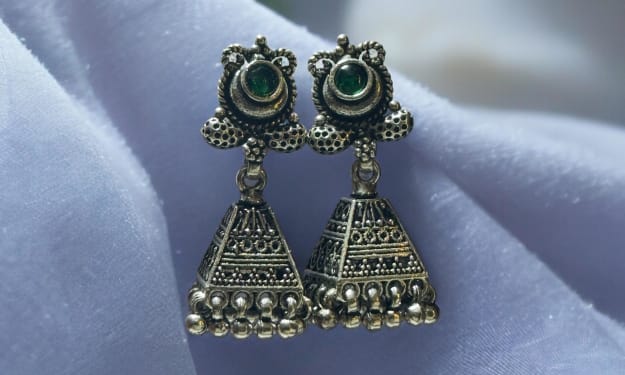Unlocking the Secrets of Roman Longevity: The Durability of Roman Concrete
Exploring the role of Pozzolan, Hydraulic Lime and Construction Techniques in Building Structures to Last

Introduction:
The study of the longevity of Roman buildings aims to understand the reason behind the durability of Roman structures. The main question is what makes the Roman buildings last so long?
The Roman Empire, known for its grand architecture and engineering, has left behind a legacy of well-preserved buildings that have stood the test of time. But what is the reason behind the longevity of these structures? A recent study by a team of scientists may have uncovered the secret to the durability of Roman buildings.
The study, led by Dr. Mark Wilson of the University of Leicester, focused on the durability of Roman concrete and compared it to modern concrete. The researchers discovered that the secret to the longevity of Roman concrete is the use of volcanic ash, also known as pozzolan, in the mixture. Pozzolan is a natural material found in volcanic ash that reacts with the lime in the concrete to form a cement-like material known as tobermorite. This cement-like material is much stronger and more durable than the cement used in modern concrete.
The Secret of Roman Concrete: Pozzolan:
The use of pozzolan, also known as volcanic ash, in Roman concrete is a key factor in its longevity. The ash reacts with the lime in the concrete to form tobermorite, a cement-like material that is much stronger and more durable than the cement used in modern concrete. The tobermorite in Roman concrete is resistant to weathering, chemical erosion, and saltwater, making it more suitable for structures built near the coast.
The study found that the tobermorite in Roman concrete is much more resistant to the elements and to chemical erosion than modern concrete. This means that Roman structures are better able to withstand the effects of weathering, such as rain and temperature changes, and are less prone to cracking and deterioration. The researchers also discovered that the tobermorite in Roman concrete is more resistant to saltwater, which is particularly important for structures built near the coast.
The Durability of Roman Concrete: Hydraulic Lime:
Another key factor in the durability of Roman concrete is the use of a specific type of lime, known as hydraulic lime. This type of lime sets more slowly than the quicklime used in modern concrete, allowing the concrete to cure more slowly and thoroughly. This slow curing process results in a stronger and more durable concrete.
Mixing Techniques and Aggregate:
The study also found that the Romans used a different mixing technique than modern builders. Instead of using large amounts of water, the Romans used a wetter mixture that was more difficult to work with but resulted in a stronger and more durable concrete. This wetter mixture, combined with the use of pozzolan and hydraulic lime, allowed the Romans to create a concrete that was much denser and more cohesive than modern concrete.
Construction Techniques:
The researchers also discovered that the Romans used a different type of aggregate in their concrete, using small stones and gravel instead of the larger stones and gravel used in modern concrete. This resulted in a concrete that was more homogenous and had fewer weak points.
The study also highlighted the importance of the Romans' construction techniques, which were more precise and skilled than those used in modern times. The Romans paid close attention to the details of their construction, ensuring that the concrete was properly mixed and placed, and that the structures were built to exacting standards. This attention to detail helped to ensure that the structures were built to last.
Implications for Modern Construction:
The findings of this study have significant implications for modern construction. The use of pozzolan and hydraulic lime in concrete can greatly increase its durability and resistance to the elements. The use of wetter mixtures and smaller aggregate can also improve the strength and cohesion of concrete. The study also highlights the importance of skilled construction techniques and attention to detail in building structures that will stand the test of time.
Conclusion
In conclusion, the study by Dr. Wilson and his team has uncovered the secret to the longevity of Roman buildings: the use of pozzolan, hydraulic lime, and specific mixing and construction techniques. These findings have the potential to improve the durability and longevity of modern structures, helping to ensure that they will stand the test of time just like their Roman counterparts. As the world faces a growing need for sustainable and resilient infrastructure, understanding the longevity of ancient structures, like the Roman buildings, may provide valuable insights for the future. The use of sustainable and durable materials, combined with advanced construction techniques, can help to create structures that not only withstand the test of time but also have a lower environmental impact. This research can also be used to improve the restoration and preservation of historic structures, ensuring that they continue to be a source of inspiration and awe for generations to come.
In addition to the practical applications of this research, it also serves to remind us of the incredible engineering and architectural achievements of the Roman Empire. The fact that their structures have lasted for thousands of years is a testament to their skill and ingenuity. It is exciting to think that by understanding the secrets of Roman concrete, we may be able to create structures that are just as enduring and impressive.
Overall, the study's findings are an important step forward in the field of construction and architectural preservation. By understanding the reasons behind the longevity of Roman buildings, we can create more durable and sustainable structures for the future. It also serves as a reminder of the incredible achievements of the Roman Empire and the legacy they left behind.
About the Creator
Enjoyed the story? Support the Creator.
Subscribe for free to receive all their stories in your feed. You could also pledge your support or give them a one-off tip, letting them know you appreciate their work.





Comments
There are no comments for this story
Be the first to respond and start the conversation.